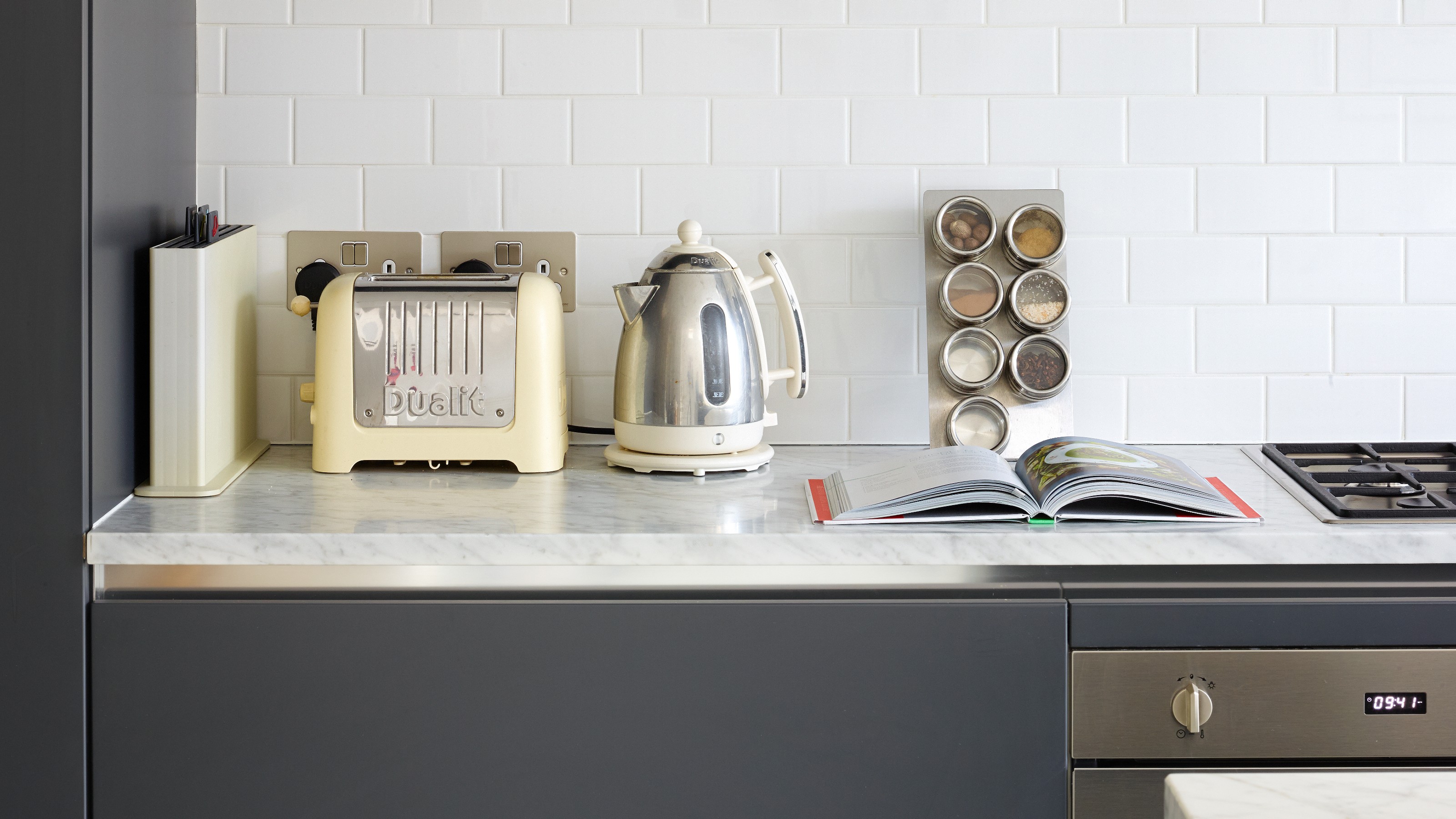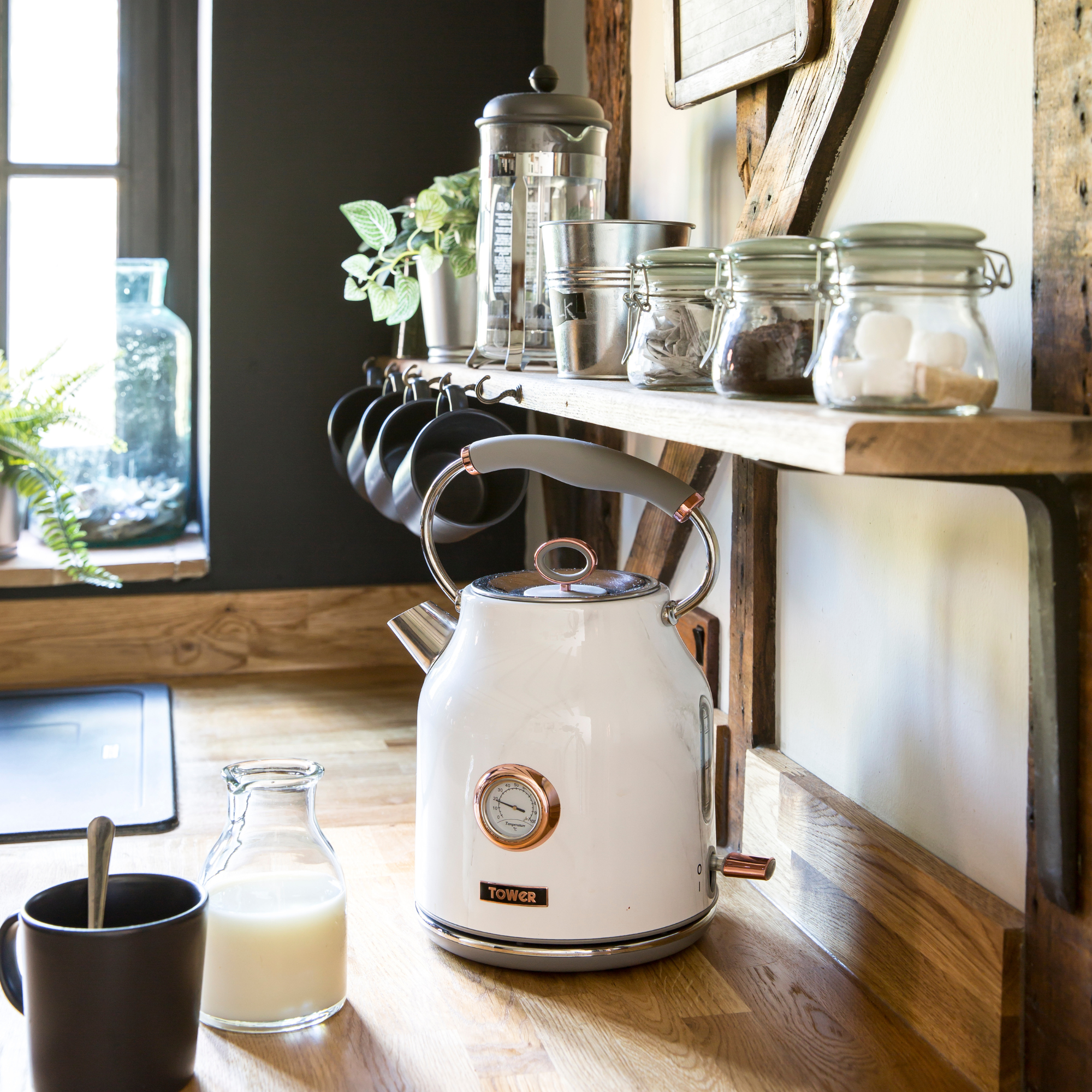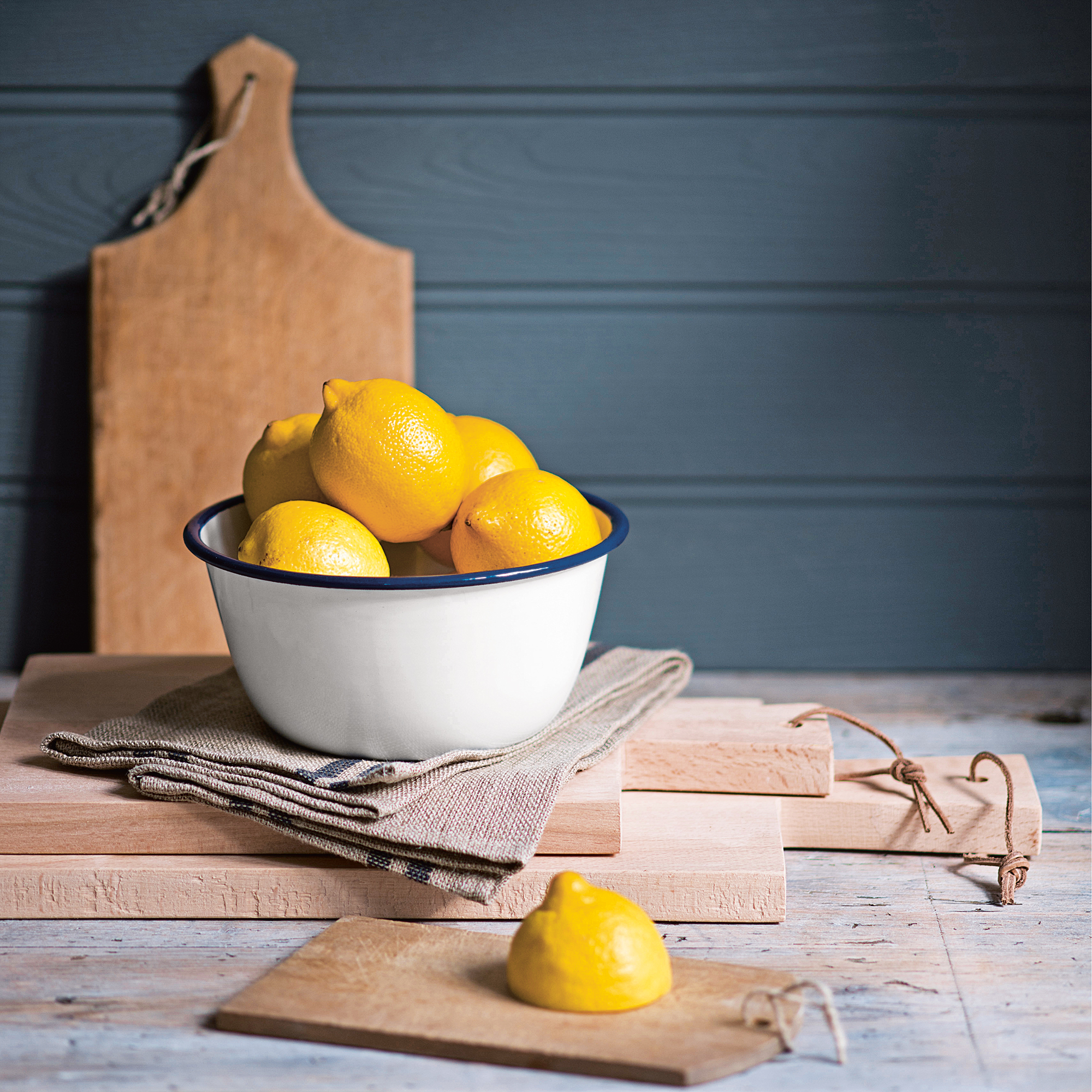How to clean a kettle with lemon and banish limescale with this natural cleaning hack
Descale your kettle the natural way

Your kettle is one of the most used appliances in the house, that's why it's so important to clean it regularly. But you don't need a purpose-bought descaler to do the job, you can easily learn how to clean a kettle with a lemon and get rid of limescale naturally.
Descaling your kettle keeps your boiled water tasting fresh, prevents unwanted limescale floaters in your tea, and also helps to keep your kettle functioning at its optimum capacity.
Knowing how to clean your kettle is therefore an essential skill in your home maintenance toolkit. One of the best materials you can use to do this, the humble lemon, is an ingredient many of us already have handy in our fruit bowl – here are some tips on how to clean your kettle with lemon.

Why should you clean a kettle with a lemon?
Many cleaning experts’ favourite limescale-busting product comes in the unexpected form of this favourite citrus fruit.
'The secret weapon in lemons is citric acid, as when heated, this natural acid becomes incredibly effective at breaking down and dissolving limescale,' says Catherine Green, from eco-friendly cleaning products brand smol. Citric acid works by breaking down the mineral build-up inside the kettle, making it easier to wash away.
This is what makes lemons such a powerful cleaning tool, while still being gentle enough to use on your food appliances. They also won’t leave a residue that’ll affect the taste of your water afterwards. 'They're completely food-safe, leaving no harmful residues, and add a fresh, natural scent rather than chemical odours,' adds Catherine. They’re also, she points out, a more environmentally-friendly option, and a way to reuse leftover lemons from your cooking.

How to clean a kettle with a lemon
To get a lemony-fresh clean kettle ready for your next cuppa, follow Catherine’s step-by-step guide:
- Cut a fresh lemon into quarters
- Put the pieces in your kettle with enough water to cover the base by about 2 inches
- Bring to a boil, then let it sit for 30 minutes – this gives the citric acid time to work its magic
- Pour out the lemony water
- Give it a thorough rinse with fresh water
- Do one final boil with fresh water and discard, to ensure no lemon taste remains
If your kettle is particularly badly affected by limescale, you may need to repeat this process.
How do you remove the toughest limescale residue?
Following the tips above and cleaning your kettle with lemon should get rid of the majority of limescale build-up. This can be done by boiling lemon slices in the water inside the kettle, then leaving the lemon water to sit for 30 minutes.
For any remaining stubborn limescale residue, you can use a soft sponge to scrub the inside of the kettle. 'Avoid abrasive scrubbers, as they may damage the interior. Empty and rinse well with fresh water to remove any lemon residue,' says Isabella Forgione, AO’s small appliance expert.

Why do I need to clean my kettle?
'Limescale is a chalky white residue that forms when water containing calcium and magnesium is heated to a boil,' says Isabella. In areas with hard water, limescale will form more quickly because of the higher levels of calcium and magnesium in the water.
While limescale isn’t harmful to drink (in small amounts), when left untouched, it can cause problems for your kettle in the long run, not good news if you've forked out for the best kettle you can buy.
'It can reduce the efficiency of your kettle by insulating the heating elements,' adds Isabella, which means that water will take longer to boil. This uses more energy, and will drive up bills.
'Excess limescale causes wear and tear potentially leading to a shorter lifespan of your kettle,' according to Isabella, meaning regularly cleaning limescale from your kettle will limit the number of times you’re likely to have to replace it.
More to the point, limescale can leave an unpleasant, gritty residue in boiled water, ruining what could have otherwise been a perfectly nice cuppa!
Have you tried cleaning a kettle with a lemon?
Get the Ideal Home Newsletter
Sign up to our newsletter for style and decor inspiration, house makeovers, project advice and more.
You must confirm your public display name before commenting
Please logout and then login again, you will then be prompted to enter your display name.
-
 Should your front door colour match your hallway? Interior experts reveal 3 reasons why it should (and 3 reasons it shouldn't)
Should your front door colour match your hallway? Interior experts reveal 3 reasons why it should (and 3 reasons it shouldn't)Are you team matching or contrasting?
By Ellis Cochrane
-
 This £200 limited-time discount makes this Dyson vacuum cheaper than I’ve ever seen it - run don’t walk to Argos for this bargain
This £200 limited-time discount makes this Dyson vacuum cheaper than I’ve ever seen it - run don’t walk to Argos for this bargainIt's the most affordable Dyson on the market right now
By Lauren Bradbury
-
 Martin and Shirlie Kemp’s pastel flower beds has given their Victorian renovation a romantic look - how you can get the look
Martin and Shirlie Kemp’s pastel flower beds has given their Victorian renovation a romantic look - how you can get the lookTheir pastel garden is the cottage garden inspo you've been looking for
By Kezia Reynolds